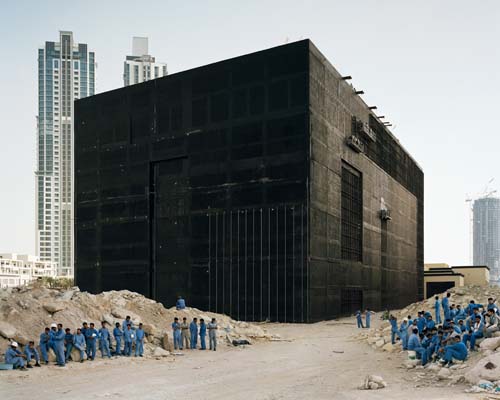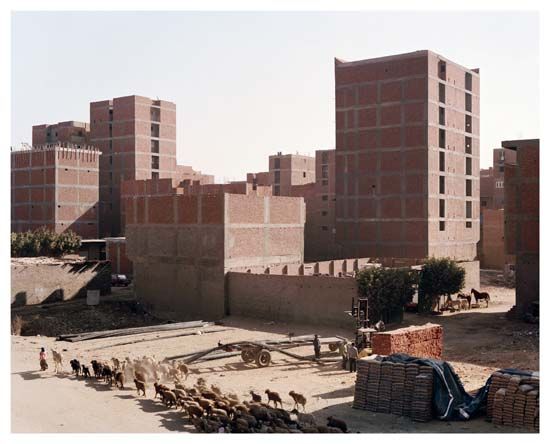It’s a commonly-known fact that if you attempted to dig a well in Manhattan’s tony Battery Park neighborhood, you’d hit trash first. Much of downtown Manhattan is built on fill – 19th-century trash, in some places, (British) World War II-era rubble in others. As Geoff Manaugh of BLDGBLOG describes it, “down in the foundations of the city are other cities.”
In the U.S., acknowledging that type of building-over-building makes us uncomfortable. Maybe it’s because at 234, we’re still a relatively young nation, such that digging deep wouldn’t reveal that many layers. Perhaps acknowledging the past ignites a latent fear of compromising our cultural prominence – a very un-American act in these dog days of American hegemony. Even plain old racism – that we’d find the remnants of Native American civilizations, as opposed to Greek or Roman ruins – may have something to do with our ambivalence to what lies beneath.
But in the Middle East, as demonstrated by Bas Princen’s Refuge, Five Cities, up through June 26th at New York’s Storefront for Art and Architecture, the relationship between past and present, order and disorder, is not so neatly defined. These cities’ long and storied histories – Princen shot pictures across Amman, Beirut, Cairo, Dubai and Istanbul – demand a different relationship to and understanding of progress and property rights than the version accepted in the West. At the same time, these cities’ contemporary urban troubles, such as sprawl and traffic, pollution and improper infrastructure, to say nothing of economic and environmental sustainability, raise traditional, and troubling, questions about development.

For this series, Princen, a trained architect from the Netherlands, shot structures modern and timeworn, permanent and haphazard. In these images, detritus abuts “development” and Western influence – not least as demonstrated by the ubiquitous satellite dishes affixed to the roofs on so many buildings, even those ramshackle structures in the shanty town shown in Mokkatan Ridge (garbage recycling city), Cairo, 2009. In this large-scale photo, mounds of neatly-assembled garbage, wrapped in bags and stacked and sorted by type (bottles, splintered wood), appear more orderly than the “city” where they’re gathered. The only visible living inhabitants are animals: a herd of pigs; a pair of dogs on a roof. In another shot, the massive, black square building shown in Cooling Box, Dubai, sits between twin piles of rubble. Windowless and mysterious – one thinks of the box containing Schrodinger’s cat – the building seems an intruder juxtaposed against the bright-colored and many-windowed high-rises towering in the background. A few dozen blue jump-suited-workers – all men – mill around the rubble, dwarfed by the massive black structure. Have they just finished erecting the building? Or are they about to tear it down? Their role is unclear – as is the option (construction or destruction) that would signify the greatest degree of progress.
Elsewhere, in Former Gecekondu Hillside, Istanbul, 2009, the neat, modern-looking building at the photo’s center has presumably displaced the gecekondu – the Turkish term for the illegal (but nevertheless sanctioned) squats that went up across Turkey from 1945 until the mid-‘80s. On top of this well-ordered modern structure, however, the gecekondu seem to have prevailed: small, crowded structures are built shoulder-to-shoulder, one atop another. As in many of the other photos in the show, the relationship here between ‘past’ (trash) and ‘present’ (the modern city) is unclear. Rather than suggest a triumph of one over the other – or of man over nature, say, or order over decay – these elements that are so often considered oppositional actually coexist, resulting in a very different definition of “city” than the one to which Westerners may be accustomed.
Refuge, Five Cities, is open through June 26.
















